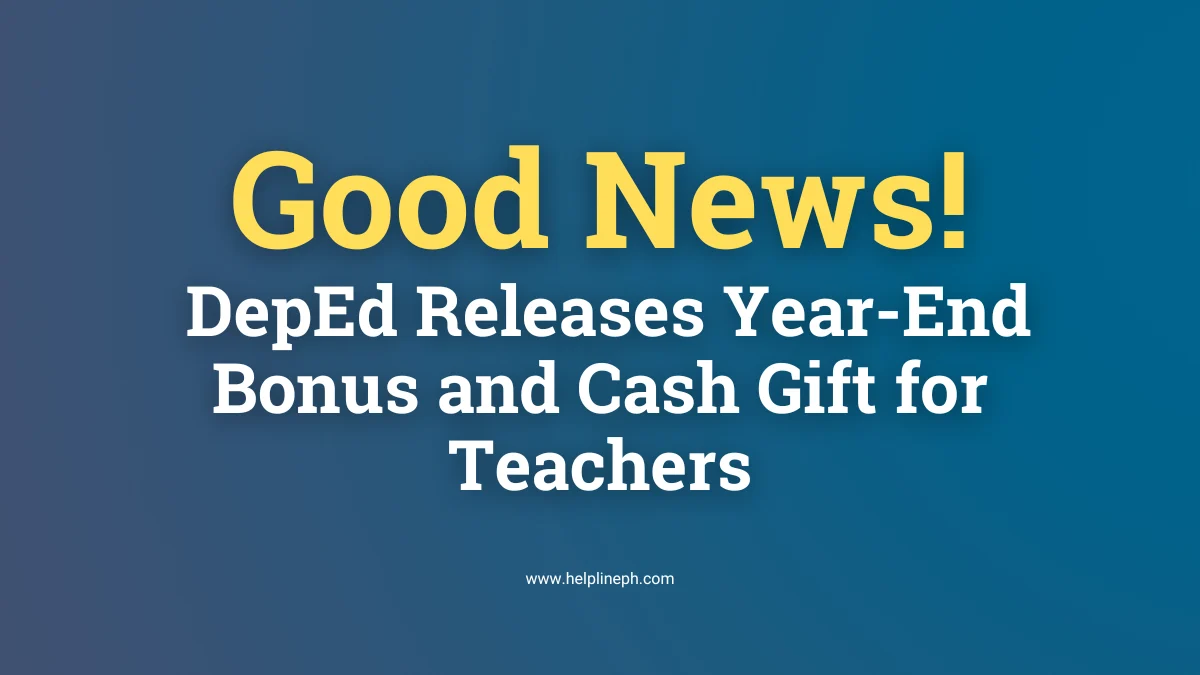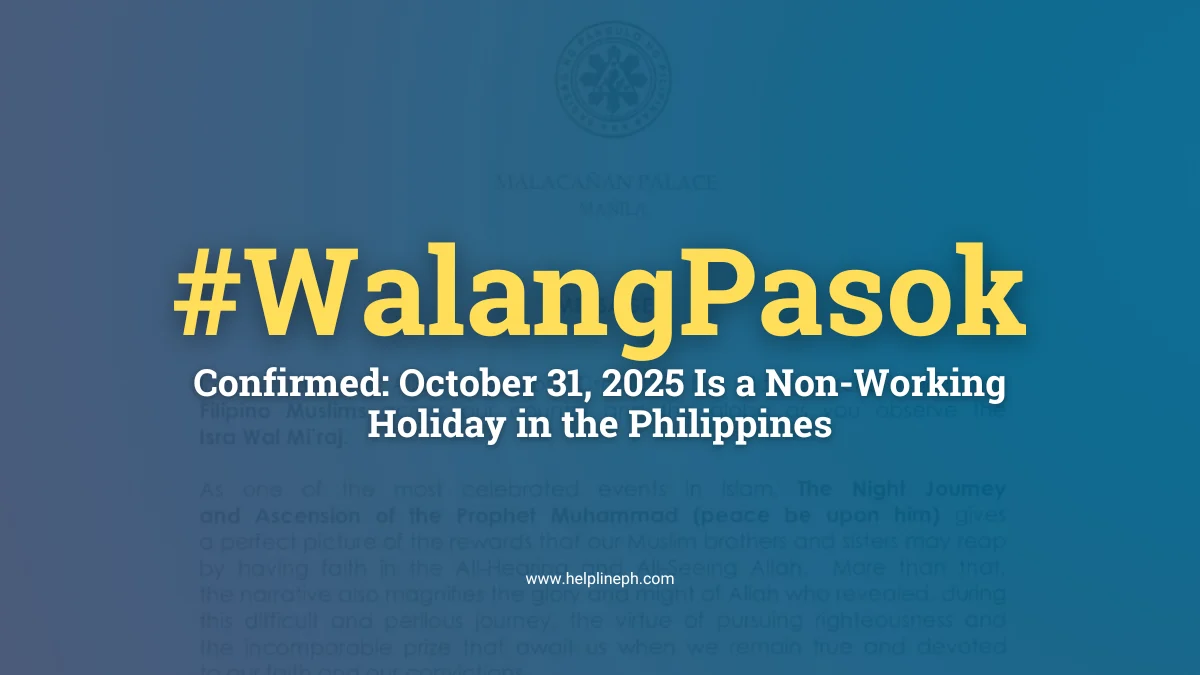The Department of Education (DepEd) has recently announced a significant change to the academic break for this school year. Instead of the usual five-day break, students will only have two days of rest during the midyear break. This decision has sparked various reactions from students, parents, and teachers as they prepare for a shortened period of relaxation and recovery. In this article, we will cover the key details about the revised break and other important events happening in November.
Shorter Midyear Break for Learners
In the past, students enjoyed a five-day midyear break, which gave them enough time to relax, recharge, and prepare for the second half of the school year. However, the DepEd has shortened this period to just two days. The new schedule allows learners to take a break on November 28 and 29, 2024. Before that, from November 25 to 27, students will still have classes but through distance learning methods. This means they won’t be attending physical classes, but they will still have lessons and activities online or through printed modules.
The reduced break aims to make sure that the school calendar stays on track and that learning disruptions, such as weather-related cancellations or other issues, are addressed without pushing the end of the school year further.
Breakdown of the Midyear Break
- November 25-27: Distance learning (students stay at home but complete online tasks or worksheets).
- November 28-29: Two-day academic break (no schoolwork, students can fully rest).
This new arrangement has raised some concerns about whether students will have enough time to recover from the stress of schoolwork, especially as many have expressed feeling overwhelmed by the demands of both in-person and distance learning.
November Events and Holidays
November is packed with significant dates, and here’s a closer look at the events learners should be aware of:
1. All Saints’ Day (November 1)
November 1 is observed as All Saints’ Day, a special non-working holiday in the Philippines. It is a day for families to honor and remember their loved ones who have passed away. While this is not part of the academic break, students and their families often visit cemeteries and churches to pay respects, which may affect attendance during this time.
2. Araw ng Pagbasa (November 27)
On November 27, schools will hold Araw ng Pagbasa, a national day dedicated to reading. This event is an opportunity for students to enhance their reading skills and foster a love for reading. Even though it’s during the midyear break, learners are encouraged to participate in reading activities, either individually or in groups. Schools may organize virtual reading sessions or provide recommended reading lists for students to enjoy during this day.
3. Bonifacio Day (November 30)
Bonifacio Day, celebrated every November 30, is a regular holiday commemorating the birth of Andrés Bonifacio, one of the leaders of the Philippine revolution against Spanish colonization. Since it’s a holiday, students, teachers, and other workers get the day off, making it a chance to extend their break slightly after the shortened academic pause.
Administration of the Rapid Mathematics Assessment (RMA)
In addition to these events, the DepEd will soon release a separate memorandum regarding the schedule for the Rapid Mathematics Assessment (RMA). This assessment is important for checking the students’ understanding and proficiency in mathematics. While the exact date has not yet been announced, schools are expected to receive the schedule soon. Learners, particularly those who may struggle with math, are encouraged to prepare ahead of time, as this assessment will likely be conducted soon after the academic break.
Reactions to the Shortened Break
The announcement of the two-day academic break has brought about mixed reactions from students, teachers, and parents. Here are some of the most common concerns and opinions:
- Student Fatigue: Many students are worried that the shorter break will not give them enough time to fully rest. With only two days of true rest after the distance learning period, they may still feel overwhelmed and stressed.
- Teachers’ Workload: Teachers also expressed concern about the shortened break, as they too need time to rest and prepare lessons for the next part of the school year. Some teachers worry that distance learning during the first three days of the break may still demand a lot of their time, leaving little room for actual rest.
- Parents’ Reactions: Some parents are supportive of the decision, pointing out that the shortened break allows for more instructional days, which can help cover gaps in learning. However, other parents share the same concerns as students and teachers, worrying about the mental and emotional toll this might take on their children.
Why Did DepEd Shorten the Break?
The DepEd has provided several reasons for shortening the midyear break:
- Time Recovery: The goal is to recover lost instructional days due to unexpected events like typhoons or class suspensions.
- Avoid Delays: By reducing the break, the DepEd aims to keep the school calendar on track, preventing the extension of the school year into the summer months.
- Maintain Educational Quality: Ensuring that students have enough school days to cover the required lessons is a priority for the DepEd. The shortened break allows more time for academic instruction, which is crucial for student learning outcomes.
Tips for Managing Stress During the Shortened Break
The shorter break can be challenging, but here are a few tips to help students manage their stress:
- Plan Relaxation Time: Use the two days wisely by fully resting and engaging in activities that help you unwind. Avoid cramming schoolwork during these days, as they are meant for relaxation.
- Stay Organized: During the distance learning period (November 25-27), make sure you have a clear schedule to complete your tasks on time. This will prevent the feeling of being rushed and allow for a smoother transition into the break.
- Engage in Hobbies: If possible, spend some time doing activities you enjoy, whether it’s reading, drawing, or playing sports. These activities can help recharge your energy.
- Sleep Well: Prioritize getting enough sleep, not only during the academic break but also during the distance learning days. Sleep is essential for maintaining focus and energy.
- Seek Support: If you feel overwhelmed, don’t hesitate to reach out to your family, friends, or teachers for support. Sometimes, talking about your concerns can relieve stress.
Frequently Asked Questions (FAQs)
Why did DepEd reduce the midyear break to two days?
DepEd shortened the break to ensure that the school year stays on track and to recover lost instructional days due to unexpected class cancellations.
What is Araw ng Pagbasa?
Araw ng Pagbasa, or National Reading Day, is held on November 27 and encourages students to read and develop a love for reading.
Will there still be a holiday in November?
Yes, there are two holidays in November: All Saints’ Day on November 1 and Bonifacio Day on November 30.
What is the Rapid Mathematics Assessment (RMA)?
The RMA is an assessment focused on evaluating students’ math skills. The exact schedule for the RMA will be announced in a separate DepEd memorandum.
How can students make the most of the shortened break?
Students should use the break to relax, organize their schedules, and engage in stress-relieving activities. It’s important to avoid cramming or overworking during this short rest period.
In conclusion, while the shortened academic break may feel challenging, proper time management and relaxation strategies can help students cope. With important events like Araw ng Pagbasa and Bonifacio Day also coming up, students still have opportunities to enjoy November despite the reduced academic pause.






